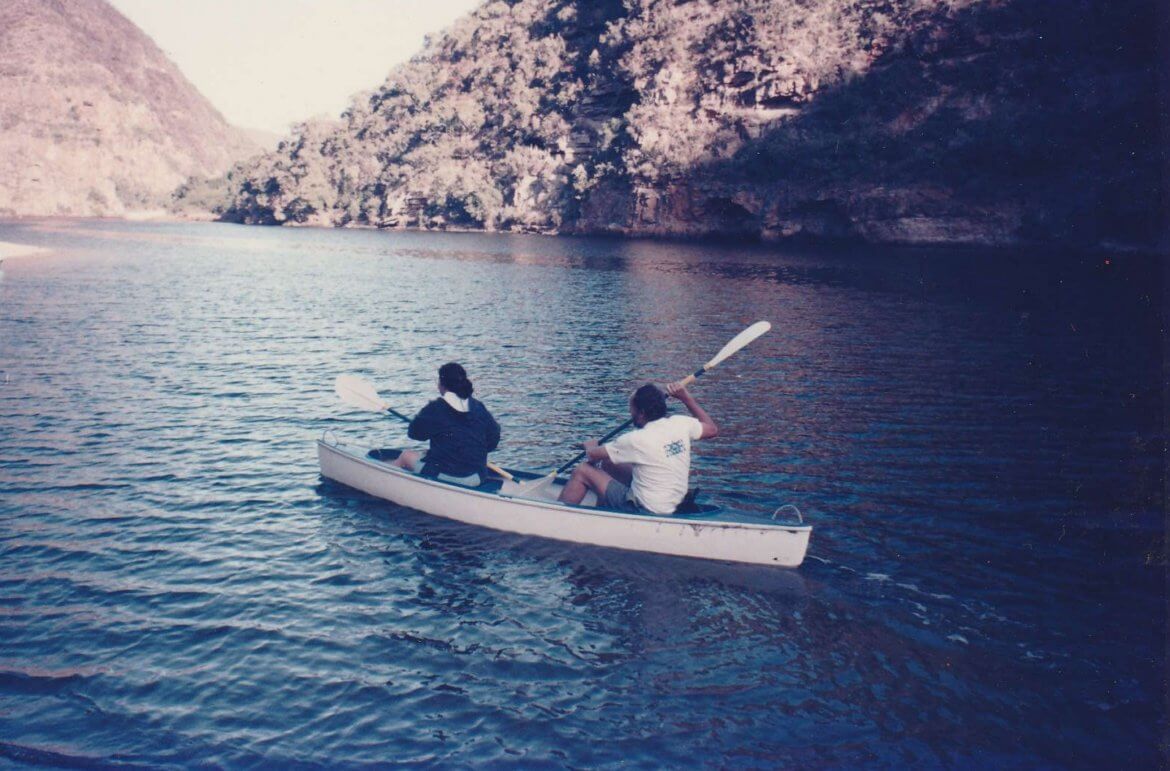Add this item to your emergency quick fix list.
By Ruth & Niels Lund
Whenever we managed to prise our yacht from a seductive bay and head out to sea for destinations further away than a dinghy ride, one of the first things on our “must have before we leave” list, was a range of tapes, electrical, masking, amalgamating, sail repair, thread seal, chafe and, of course, extra rolls of duct tape.
The amazing stickability of duct tape was demonstrated when we went on our first river trip with the canoe club. Cruising friend, Gerfried Nebe, (a boat builder and one of South Africa’s top racing canoeists) assured us it would be “a doddle”, so we two novices set out in our 2-man canoe, not knowing what waited around the bend.

A loud rushing sound announced the first rapid. On the approach Niels managed to get his paddle stuck between 2 rocks. He hung on and the canoe pirouetted around before the paddle broke loose. By complete fluke this action shot us through a sharp kink and down into the water below. Loud clapping made us realise that most newbies came unstuck at this point. As the day wore on, there were quite a few of these surprises. One of the rapids cut narrowly through high rock walls, and most portered their canoes across the land, but those more “gung ho” went through upside down, back to front and every which way, resulting in the smashing and dismemberment of one canoe (though thankfully not its teenage occupant) into 3 separate pieces. Gerfried calmly hauled out his rolls of duct tape and after much sticking and reconstructing, the canoe was safely paddled the rest of the way, maintaining its integrity for many hours more. For us this was a powerful demonstration that duct tape was essential to boating life.
Nautical literature is full of instances when tape has been all that prevented disaster on a boat, providing temporary fixes (which sometimes turn out to be not so temporary) for leaky hatches, sinking dinghies, punctured water pipes, destroyed sails, and steering gear failure necessitating an emergency tiller. Search the internet and you will find duct tape used for the entire construction of rowing dinghies, outriggers, kayaks, pirate boats, “anything that floats” creations and many more amazing things.
However, Niels has a little warning for the uninitiated: “Duct tape has a sneaky habit of not going where you want it to go. The cut end inevitably folds back on itself and cannot be unstuck, so after a frenzied one-handed battle on a heaving deck or up a swaying mast, you often end up with the tape stuck to yourself or anywhere but the intended target, and a mangled ball of discarded tape bigger than the roll itself.”
The moral of the story – when this stuff sticks it really sticks, so be careful, as the glue residue can be notoriously difficult to remove. Some useful links are: https://cleaning.lovetoknow.com/cleaning-tips/how-remove-duct-tape-residue-easily and https://www.wikihow.com/Remove-Duct-Tape-Residue
I’ll end this blog with someone else’s wise words, and recommend you make sure you always have the tapes you need to hand, as a panacea for the unexpected.

